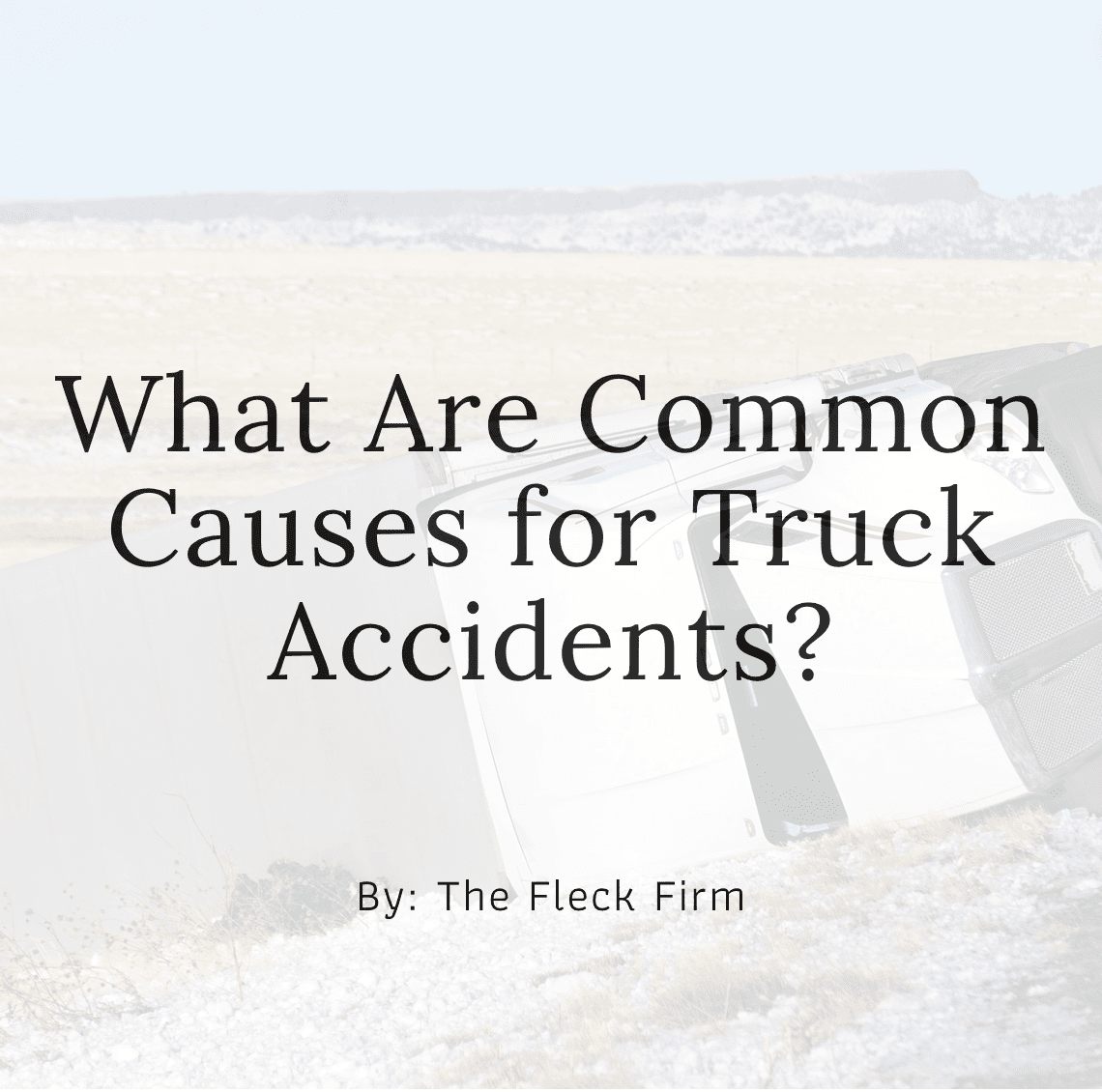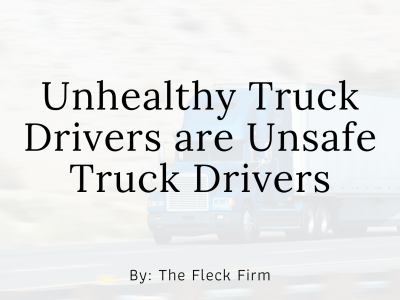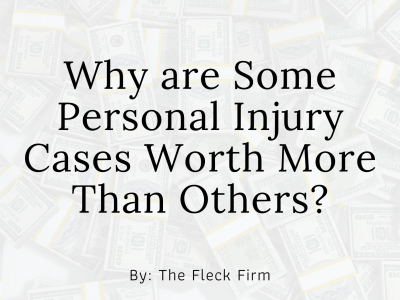Large trucks make our lives possible because they transport what we need and want, but commercial truck accidents take lives too. In 2019, 5,244 people nationwide were killed in accidents involving large trucks and buses, according to the federal Department of Transportation. Another 182,000 people were injured.
Why Do Commercial Trucks Crash?
What’s causing all this death and destruction? The National Highway Traffic Safety Administration (NHTSA) and the Federal Motor Carrier Safety Administration (FMCSA) studied the reasons for severe crashes involving large trucks.
Fatigue, speeding, and drinking alcohol are major factors in motor vehicle crashes. But an accident may have many causes, and when more than one vehicle is involved, all the drivers involved may make mistakes.
Elements that lead to a crash may have started long before the accident. A truck driver may be chronically sleep-deprived or under the constant stress of delivering loads on time. There are also issues at the moment before an accident, like being distracted by a smartphone or failing to notice stopped vehicles ahead.
The NHTSA study covered large truck accidents from 2001 to 2003. There were about 120,000 fatal and injury-causing crashes nationwide involving at least one large truck, with a total of 141,000 trucks involved. The agency considered three crucial variables:
- Critical Event:It’swhat put the vehicle on a course toward the collision
- Critical Reason: The reason for the critical event or the mistake causing it. It could be vehicle failure, driver error, or the weather
- Associated Factors: The vehicle, person, and environmental conditions at the time of the crash
Each accident is a mix of all three.
Other attorneys take contingent fees of 33% to 50% of your settlement.
We want you to keep more of your money.
Our contingent fee is only 30% on cases settled prior to filing suit.
Critical Events
The NHTSA found three critical events impacting many large truck crashes:
- Driving off the travel lane and into another or off the road (32 percent)
- Loss of vehicle control because the truck was going too fast for conditions, the cargo shifted, there was a vehicle systems failure, bad road conditions, or another reason (29 percent)
- Rear-ending another vehicle in the truck’s lane (22 percent)
Many of these events could result from driver error, something wrong with the truck, or how it was loaded.
Critical Reasons
How critical reasons were assigned depends on the type of crash. For all accidents, 55 percent were given critical reasons, and 44 percent were given a critical reason in crashes involving a large truck and a passenger vehicle.
Driver critical reasons cover four categories:
- Non-Performance: The driver was asleep, was disabled by a medical condition, or physically impaired for a different reason
- Recognition: The driver was not paying attention or failed to observe what was going on for another reason
- Decision: The driver chose to do something like travel too fast for conditions, misjudged how fast other vehicles were traveling, or tailgated another vehicle
- Performance: The driver may have panicked, overcompensated by braking too hard or steering too sharply, or had poor directional control of the truck
The NHTSA came up with the following breakdown:
| Critical Reasons | Number of Trucks | Percent of Total |
| Driver | 68,000 | 87% |
| Non-Performance | 9,000 | 12% |
| Recognition | 22,000 | 28% |
| Decision | 30,000 | 38% |
| Performance | 7,000 | 9% |
| Vehicle | 8,000 | 10% |
| Environment | 2,000 | 3% |
Associated Factors
From least to most common, the associated factors are:
- Brake problems
- Traffic flow problems like a traffic jam or blocked lane
- Side effects of prescription drugs on the driver
- Traveling too fast for conditions
- The driver not knowing the area
- Problems with the road
- The truck was required to stop before the crash (traffic lights or a crosswalk)
- Side effects of over-the-counter drugs on the driver
- Inadequate surveillance of the situation by the driver
- Driver fatigue
The driver causes nearly all these factors.
Factors When Commercial Trucks and Passenger Vehicles Collide
Half of the large truck crashes involved passenger vehicles. For both the large trucks and passenger vehicles, there was a statistically significant connection between the following factors (listed from least to most common):
- Disrupted traffic flow
- The driver was unfamiliar with the area
- Inadequate surveillance
- Traveling too fast for conditions
- Making an illegal maneuver
- Not paying attention
- Driver fatigue
- Driver illness
- False prediction of what the other driver would do
- Distraction by something inside the vehicle
For large truck drivers, but not those driving passenger vehicles, tailgating and distraction by something outside the truck were more often related to the critical reason. In general, the following were more common problems before the crash for passenger vehicle drivers than truck drivers:
- Alcohol and illegal drug use
- Fatigue (twice as common in passenger vehicle drivers than truck drivers)
- Illness (a problem five times more often for passenger vehicle drivers)
The study was of accidents about twenty years ago. Though it gives crucial insight, times have changed. Due to a driver shortage, truck drivers may be under pressure to do more in the same amount of time. There are also far more apps on smartphones to distract drivers. Since the COVID-19 pandemic, passenger vehicles are going faster, and drivers are more reckless.
Free Consultation
Contact us today for a free consultation to see how we can put our years of experience to work for you.
Are You Injured Because of an Accident with a Commercial Truck?
If you have any questions about your legal rights to compensation and how they can be protected, contact The Fleck Firm at (270) 446-7000 to schedule a free consultation. We’ll talk about the accident, how Kentucky law may apply, and your best options to proceed. Insurance companies have lawyers. You should have one too.








